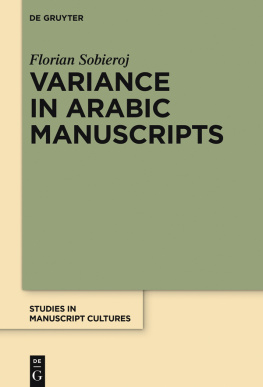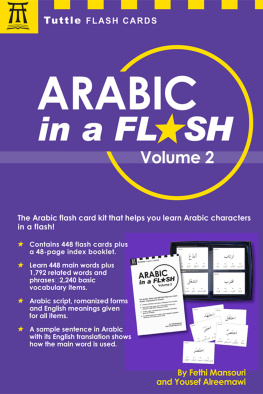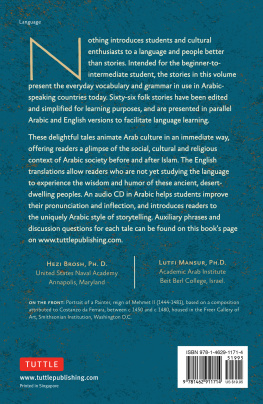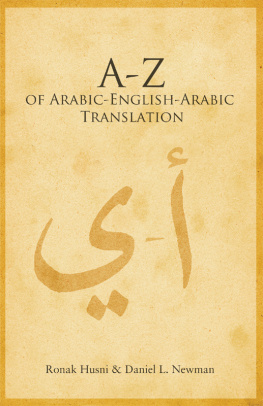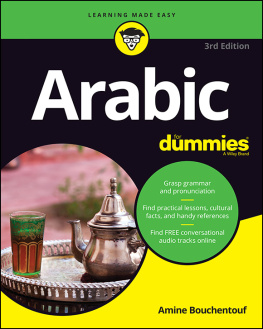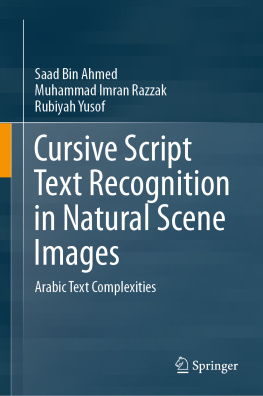Guide

Florian Sobieroj
Variance in Arabic Manuscripts
Studies in Manuscript Cultures

Edited by
Michael Friedrich
Harunaga Isaacson
Jrg B. Quenzer
Volume 5

ISBN 978-3-11-045869-5
e-ISBN (PDF) 978-3-11-046058-2
e-ISBN (EPUB) 978-3-11-046000-1

This work is licensed under the Creative Commons Attribution-NonCommercial-NoDerivs 3.0 License. For details go to http://creativecommons.org/licenses/by-nc-nd/3.0/.
Library of Congress Cataloging-in-Publication Data
A CIP catalog record for this book has been applied for at the Library of Congress.
Bibliographic information published by the Deutsche Nationalbibliothek
The Deutsche Nationalbibliothek lists this publication in the Deutsche Nationalbibliografie;
detailed bibliographic data are available on the Internet at http://dnb.dnb.de.
2016 Florian Sobieroj, published by Walter de Gruyter GmbH, Berlin/Boston.
The book is published with open access at degruyter.com.
www.degruyter.com
Acknowledgements
This publication first originated in Research Group 963, Manuscript Cultures in Asia and Africa, based at the University of Hamburg, Germany. The DFG (German Research Foundation) was a generous supporter of this endeavour. The results of the discussions conducted by the young scholars participating in this research group have been integrated into this work.
It is my pleasure to thank a number of people who have all uniquely contributed to the completion of this piece of writing in different ways. First and foremost, I would like to thank Tilman Seidensticker, the mastermind behind this project. He wrote an outline defining the state of the art, objectives and methodology, and he has proof-read large parts of the book. Any mistakes which may be found in the execution of the project he initiated are solely my responsibility, of course. My thanks also go to Jasmin Elshamy from the University of Jena, who took the task upon herself of turning my lists of deviations in the arrangement of verses for the four poems into graphic tables. I also gratefully recall the intervention of Sara Nur Yildiz (Orient-Institut Istanbul); her help allowed me to secure access to the manuscripts of the didactic poems kept at the Sleymaniye Library in Istanbul, which I examined during a stay in 2011. Thanks are due to the five libraries I worked with Bayerische Staatsbibliothek Mnchen (BSB), Staatsbibliothek zu Berlin Preussischer Kulturbesitz (SBB), Niederschsische Staats- und Universittsbibliothek Gttingen (SUB), Sleymaniye Library of Istanbul and Princeton University Library for providing microfilms, paper or digital copies of their manuscripts as well as granting permission to publish pictures from them. I owe special thanks to the editors for accepting this work for publication in the series of books entitled Studies in Manuscript Cultures (SMC). I also gratefully acknowledge the help of Joe McIntyre, the English-language proof-reader who corrected many of my mistakes and improved my style of writing in English. Last but not least, I would like to express my gratitude to CSMCs editorial assistant, Cosima Schwarke, who worked on the typescript in its final stages.
Florian Sobieroj, Jena, July 2015
1.1State of the art
In Arabic Islamic literature, as in other literatures where texts have been transmitted in manuscript form, an astonishingly large spectrum of variance can be observed in different copies of one and the same text: variance of length, arrangement and textual content. This observation applies not only to works of so-called open transmission but also to authors works which have a certain thematic and textual individuality and which are held in some esteem by authorities in the field, i.e. texts which have been passed down in closed transmission. However, by examining this little studied phenomenon of text variance, we discover that learned scribes and users have tried to limit the variance with diverse means of text stabilization.
Arabic and Islamic studies have, from their beginnings, been aware of the subject of textual variance, motivated in particular by the great divergences between different lines of transmission where, in view of the identity of the main transmitters and the subject matter, such discrepancies were not to be expected. Eventually, after almost 150 years of discussion the phenomenon was explained by the Austrian scholar Aloys Sprenger (d. 1893) through a distinction made between tracts composed for publication on the one hand, and private lecture notebooks or notes of the category aide-mmoire on the other.
Also with genuine texts which appeared in Arabic literature from the ninth century onward,
In Arabic studies, in general, variance of text has been viewed as a secondary phenomenon at best; more often it has been regarded as a disturbance which obstructed the editor who was trying to restore an authors text preserved in manuscript form. Variance has rarely been placed in the centre of scholarly attention and studied in its own right.
However, in the recent past, there have been some attempts in studies on works categorized as belonging to the open transmission, to place variance itself in the focus of research. One researcher, in her study of the Kitb al-mujarrabt or Book of tested [magical] recipes (GAL 2,326, XII ) of al-Muammad b. Ysuf al-Sans (whose shorter aqda will be analysed in chapter 5), has examined the inter-relationship of nine manuscripts and has arrived at the seemingly contradictory conclusion that, on the one hand, recipes have been copied blindly without selecting any individual items, but that, on the other, considerable discrepancies can be observed to exist in the repertoires within the manuscripts.
Whereas in other philological areas high standards have already been reached in the study of variance (especially in classical philology), in Arabic studies, the subject has been treated with neglect. Techniques of correction and collation are mentioned only exceptionally which he calls a preliminary survey, constitutes significant progress.
of copies; they will be analyzed with a view to understanding the extent and causes of variance as well as the means discernible in the manuscripts of controlling the variance. The part played by the medium manuscript - and not only by the copyist or user - in the emergence and control of variance will also be taken into consideration.
Didactic poems in Arabic are known to have been written from the early third/ ninth century onward. As one of the first representatives of this genre, the Abbasid poet Abn al-Liq (d. 816; GAL S 1,107, 239; EAL 1,1) may be mentioned with a short poem on fasting and almsgiving ([ Muzdawija] f al-awm wa-al-zakt ), of which however only fragments have survived. According to a definition proposed by van Gelder (117), didactic poetry differs from genuine poetry with which it shares metre and rhyme but lacks the style which is typical for poetry, viz. tropes and figures of speech. Didactic poems contained the summa of a given science of the medieval Muslim curriculum and presented it in a form which made it easier for the reader to memorize.

